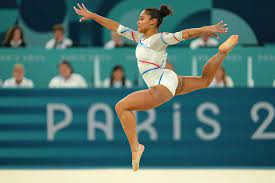Gymnastics for kids doesn’t just build strength, balance, and flexibility—it also boosts brainpower. From improving focus to sharpening memory, early gymnastics training plays a significant role in children’s cognitive development. Whether your child dreams of backflips or simply needs an active outlet, gymnastics engages both body and mind in ways that other sports can’t match.
Here’s how and why gymnastics can help children think more clearly, learn faster, and grow into more capable learners—all while having fun.
What is the link between movement and brain development?
Physical movement is deeply connected to cognitive development, especially in early childhood. Activities that require body coordination stimulate brain regions responsible for learning, memory, and problem-solving.
In gymnastics, children are constantly:
- Learning new movement patterns
- Responding to coaches’ verbal cues
- Memorising routines
- Making split-second decisions during routines or exercises
This physical-cognitive loop builds neural pathways that improve the brain’s ability to process and retain information.
Studies from Harvard Health show that exercise, particularly complex physical activities, enhances neuroplasticity—the brain’s ability to form and reorganise connections.
How does gymnastics improve concentration and attention span?
In a world of constant digital distraction, gymnastics demands presence. Children must listen carefully, stay focused through instructions, and stay alert during skills training. Missing a cue or losing focus can lead to stumbles—so they quickly learn to stay on task.
Over time, this builds:
- Improved attention span
- Stronger listening skills
- Better response control (important for classroom settings)
Consistent practice in this environment translates to better concentration at school and in other structured environments. This is especially helpful for children who struggle with hyperactivity or impulsiveness.
Can gymnastics help with memory and learning?
Absolutely. Learning a gymnastics routine is like memorising a short story told through movement. Children need to:
- Remember the sequence of steps
- Link movements with spatial awareness
- Retain the timing and rhythm
This kind of kinaesthetic memory training reinforces working memory—critical for everything from mental maths to following multi-step instructions in class.
And because routines are practised repeatedly, gymnastics gives kids regular opportunities to strengthen memory recall through active learning.
What cognitive skills does gymnastics for kids develop?
Gymnastics uniquely develops a blend of physical and mental skills that directly support cognitive growth. These include:
- Spatial awareness: Understanding how the body moves in space
- Sequential thinking: Learning and performing steps in order
- Visual-motor coordination: Linking what they see with how they move
- Impulse control: Waiting for cues and following direction
- Decision-making: Quickly choosing how to respond mid-movement
These abilities are not just relevant in the gym—they’re the same skills needed for reading, maths, and effective communication.
Is there a social and emotional cognitive benefit?
Yes, gymnastics also nurtures emotional intelligence. Children work individually and in groups, take turns, follow rules, and learn to regulate their emotions when things don’t go as planned. They build resilience by falling and trying again—turning mistakes into growth.
This kind of social learning lays the foundation for cognitive empathy, cooperation, and emotional regulation—key components of lifelong mental health and academic success.
Why start gymnastics early?
The early years are a golden window for cognitive development. The younger the child, the more “plastic” their brain—meaning it’s easier to shape through experience. Introducing gymnastics during this stage maximises benefits because:
- Movement patterns become second nature
- Cognitive skills develop alongside motor skills
- Children gain confidence in learning environments
Starting young also builds a habit of physical activity, which is linked to stronger academic outcomes and better mental health throughout life.
Are there differences between gymnastics and other sports?
While all sports offer developmental benefits, gymnastics stands out for its focus on body awareness, control, and discipline. There’s no ball, no opposing team—just the child, their body, and gravity. This demands higher levels of self-regulation and focus.
Unlike free-form play, gymnastics teaches structure, repetition, and precision—making it ideal for building early executive function skills.
FAQ: Gymnastics and Cognitive Development
Does gymnastics help children with learning difficulties?
Yes. Gymnastics can be particularly helpful for children with ADHD or sensory processing challenges, as it combines structured movement with attention training.
How often should my child attend gymnastics to see benefits?
Even one or two sessions per week can have measurable impacts, especially when the program is consistent and progressive.
Can gymnastics replace academic tutoring?
Not directly—but it enhances academic ability by supporting concentration, memory, and discipline. Think of it as brain training in disguise.
Conclusion
Gymnastics for kids goes far beyond flips and handstands. It nurtures essential cognitive functions like memory, focus, and problem-solving, while building confidence and emotional regulation. The combination of mental and physical engagement makes gymnastics one of the most holistic activities for growing minds.
If you’re considering extracurricular options for your child, look beyond academic enrichment alone. A program that activates both brain and body can set your child up for lifelong learning success. For families interested in finding structured, supportive classes, you can explore more about children’s gymnastics programs in your area.

